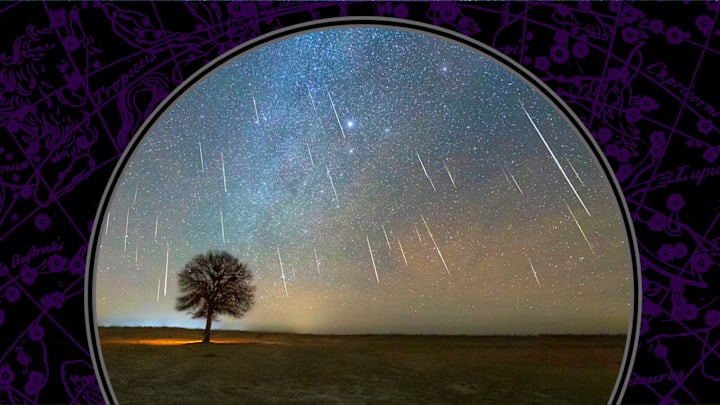If you’ve never seen a meteor shower, you’ll have the chance to witness two simultaneously this month. Both the Southern Delta Aquarids and the Alpha Capricornids will peak on July 30, creating a celestial display stargazers won’t forget. Here’s everything you need to know to catch the rare event.
While it isn’t out of the ordinary for two meteor showers to overlap, it’s much less common for them to peak at the same time, which will result in a super-charged rate for those in the viewing path.
There are a couple key terms to keep in mind when it comes to these astronomical events. Rate refers to the “Zenithal Hourly Rate (ZHR),” which is the number of meteors that occur every hour during a shower under viewing ideal conditions, with the radiant—or the point where the meteors appear to emanate—directly above the observer.
According to the American Meteor Society, the Southern Delta Aquarids are a strong shower active from July 18 to August 21 that produces high rates for about a week, with most shooting stars visible from July 29 through the 30th. The Alpha Capricornids, which occur from July 7 to August 15, are a weaker shower with a significantly lower rate but brighter fireballs. They’re set to peak from July 30 to July 31.
Just how close your viewing experience will be to ideal depends on several conditions. Those in the Southern Hemisphere will have the best view—the radiant will be almost directly above their heads. People in the Northern Hemisphere will also have a shot at catching a glimpse if they have a clear view of the southern horizon.
A clear, dark sky is the best setting for seeing meteor showers. Fortunately, the moon will be 24 percent full during the stellar performance, creating darker than average conditions. For an even better viewing experience, consider becoming an early bird and catching the action in the morning after the moon sets. Most showers peak between 2 and 4 a.m.
While you shouldn’t forget to bring supplies for your stargazing endeavors, you should forget about astronomy equipment, like binoculars and telescopes. They aren’t necessary to view meteor showers and can even limit your vision. Instead, consider bringing blankets, snacks, drinks, tents, chairs, and anything else to kill time.
Read More About Space:
manual
